Machu Picchu, the Nazca Lines, the Amazon, or Titicaca Lake. If you’re planning a trip to Peru to see its top attractions, you’ll probably have to pass through Lima Airport. It gets more international and national flights than other Peruvian airports like Cusco, Arequipa, or Iquitos.
However, going through the Lima airport can be truly intimidating, especially if you don’t know Spanish. Therefore, the Machu Travel Peru team wants to help you gather information about Lima’s Jorge Chávez International Airport. And how to arrive in Peru without complications.
Everything you need to know about the airport of Lima
- Lima Airport
- First Floor
- Second Floor
- Parking Zone
- Facilities
- Getting IN and OUT
- Flight arrivals
- Flights departures
- International Connection
- National Connection
Lima International airport
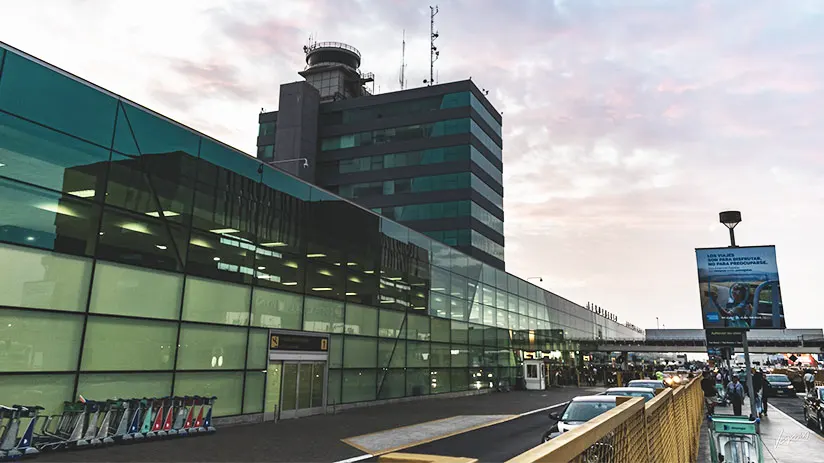
| Airport code IATA | LIM |
| Hours of attention | 24 hours a day |
| Address | Elmer Faucett Avenue, s/n, Callao 07031. About 7.5 miles (12 kilometers) west of downtown Lima |
| Elevation | 34 meters above sea level or 111 feet |
| Operating Domestic airlines | LATAM, Jet Smart, Sky Airlines, and Star Peru are the most important |
| Operating International airlines | Air Europa, Air France, Aero Mexico, Copa, Avianca, and Aerolineas Argentinas, among others |
| Terminal Area | More than 90,300 square meters |
| Platform Area | 729,600 square meters, including a runway |
| Aircraft parking spaces | 60 |
| Airline International destinations | 50 |
| Airline Domestic destinations | 18 |
| Departure lounges | 44 |
| Loading bridges | 19 |
The airport in Lima is the most important in Peru, with the highest national and international passengers traffic. By receiving around 22 million international and national passengers annually. This flight terminal, with the LIM airport code, has the name of Jorge Chavez. He was the world’s first aviator to cross the Alps in 1910, and was Peruvian.
The inauguration of the Peruvian capital airport was in 1960 to replace the ancient airport ” Limatambo”. The buildings and houses of the recent San Isidro district (Lima Center) were trapping and enclosing the Limatambo airport. The architects picked Callao, a province near Lima, as the best location for the new airport.
Since then, the airport’s development has been impressive. In 2019, many airlines and shipping companies started using Jorge Chavez. It became the main hub for moving goods in South America.
In this sense, Jorge Chavez Airport saw an increase in shipments. Consequently, it has also become a key player in the South American shipping industry.
First floor
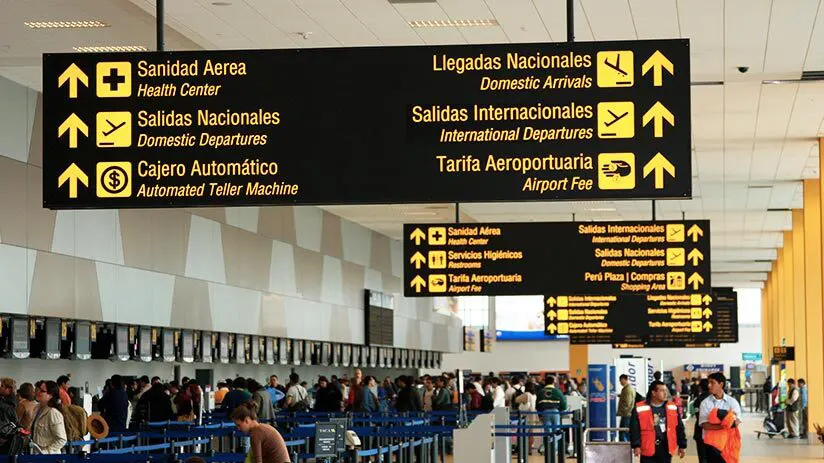
Jorge Chavez Airport also has a single terminal that serves both domestic and internationals flights. Despite this, the terminal building is small but well-organized. All the posters are in English and Spanish, and a large part of the staff is bilingual. So you will not have great trouble locating yourself.
If you want to know the best time to visit Lima, check the screen on the second floor. It shows real-time water information.
a. Airlines counters
On the first floor, there are the counters of many air companies, where the billing is done.
b. National and International arrivals salons
The national arrivals are on the right, while the international ones are on the left. The gate arrivals are from 1 to 7 and 30 to 39, respectively.
c. Tourist information
A tourist information counter is on one side of the international arrival zone. Here, you will find information about tours, attractions, and festivities in Peru.
d. Shoe-shine
There are two shoe-shine counters, and both are next to international and national arrival areas.
e. Health center
A health center is outside the national arrival zone.
f. Luggage wrapping service
This is just in front of the airline’s counter area. The cost of luggage wrapping is $9 per bag.
g. Police station
This is on the far left of the first level of the terminal. The police carry out routine inspections on suitcases and clothing with their dogs and hounds.
Second Floor
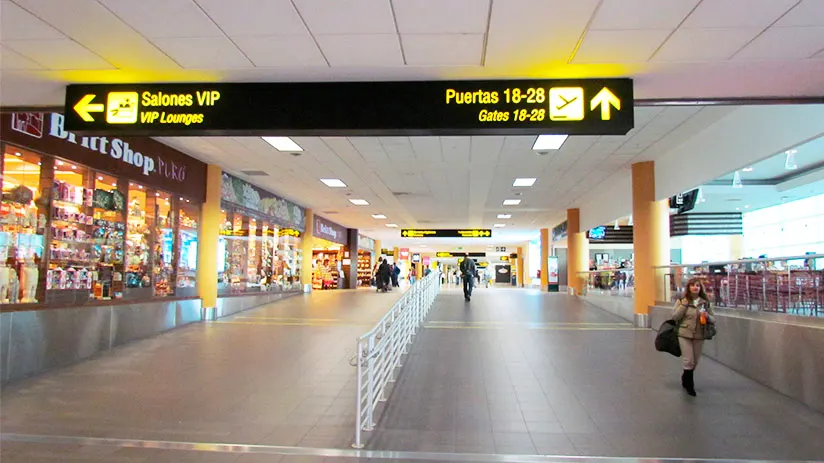
a. Food court
This zone is on the far right of the terminal. It features McDonald’s, China Wok, Pardo’s Chicken, Papa John’s, Starbucks, and Dunkin’ Donuts. Without mentioning Peruvian franchises La Lucha with awesome, among others. The food court is open every day, 24 hours a week.
b. Dutty Free
The duty-free shops are only in the international departure lounge. These offer high-end products free of tax and duty. We can mention souvenirs, chocolates, perfumes, clothing, liquors, cosmetics, and cigarettes, among others. Even electronic items such as batteries and chargers for cell phones, laptops, wireless speakers, headphones, and much more.
b. Coolbox
It is an electronic store where passengers can buy various electronic items. These include rechargeable batteries, headphones, cell phone cases, and cell phone batteries.
c. Breastfeeding Centre
After going up the escalator, on the left-hand side, you will find a breastfeeding center. This place has all the necessary equipment for mothers and newborns.
d. Luxury stores
Stores like Kuna, Sol Alpaca, Hstern, Patapampa, and Illaria are the most well-known luxury Alpaca clothes stores. These are close to international departure lounges. These are manufacturers of high-quality clothing with baby alpaca, alpaca, and vicuña fabrics. And, Illaria is a manufacturer of jewelry made from Peruvian gold and silver.
d. Souvenir Stores
Livingstone is a retail shop with handicrafts, clothes, and groceries. You’ll find beautiful souvenirs from Peru and South America, too! It is close to the Food court. The other shop is the Britt Shop.
e. Xplora Books
There is a bookstore on just one side of the commercial area. There, you can buy fiction and non-fiction books, novels, magazines, CDs, DVDs, and music.
j. SERPOST
The government postal service runs the post office. SERPOST is between the airline and airport administrative offices. The service works at the national and international levels by sending letters, postcards, and small packages.
k. Airlines administrative offices
On the second floor are the airlines’ offices with large stores.
i. Boarding gates
You will also find the security control that checks each passenger. Once you have passed through the control, you will be able to see both the international (Left) and domestic (Right) departure gates. These gates are from 6-9 and 12-26.
Parking zone
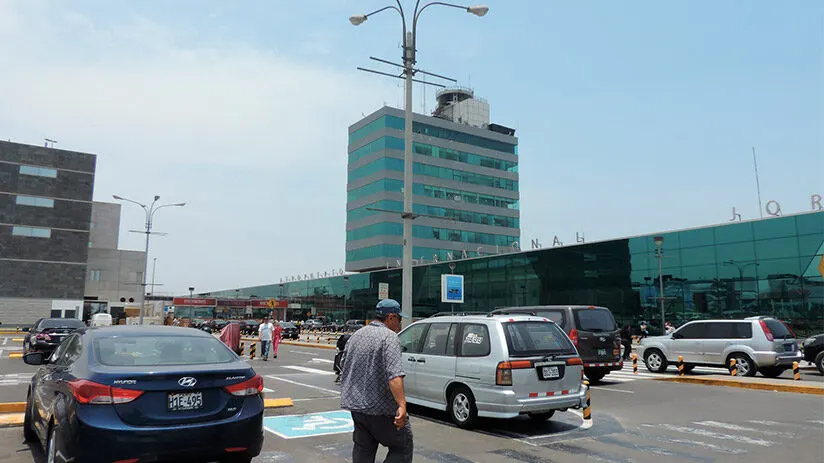
The Lima airport offers a spacious parking zone just in front of the terminal. Special machines between the parking zone and the terminal receive the payment for parking. These accept cash (Dollars or local coins) and VISA, MasterCard, American Express, and Diners Club credit cards.
Facilities
A. Wi-Fi and charge zones
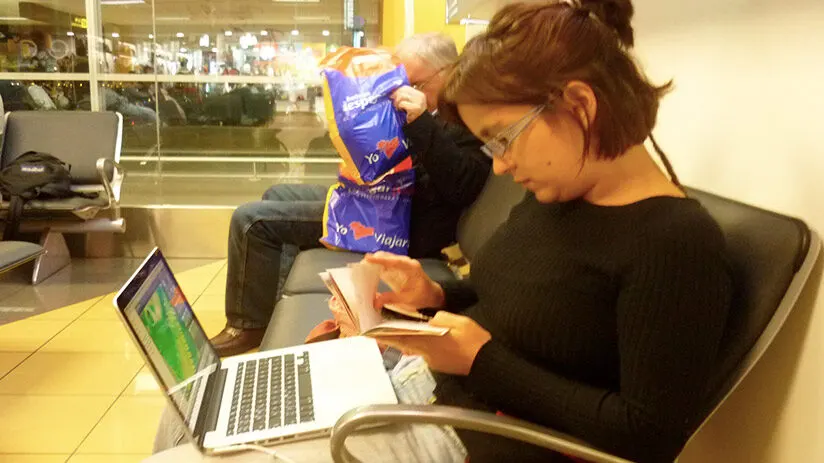
Nowadays, Jorge Chavez International Airport has free Wi-Fi in most of its areas. For the first connection, you will have 1 hour of free Wi-Fi (Name of signal: Free Airport Lima). After that, you will wait approx 15 minutes to get another hour of free Wi-Fi. Finally, you will have to pay the Premium Services (Premium Airport Lima) to get a stronger signal.
There are Panels with outlets for charging electronic items.
B. El Salon
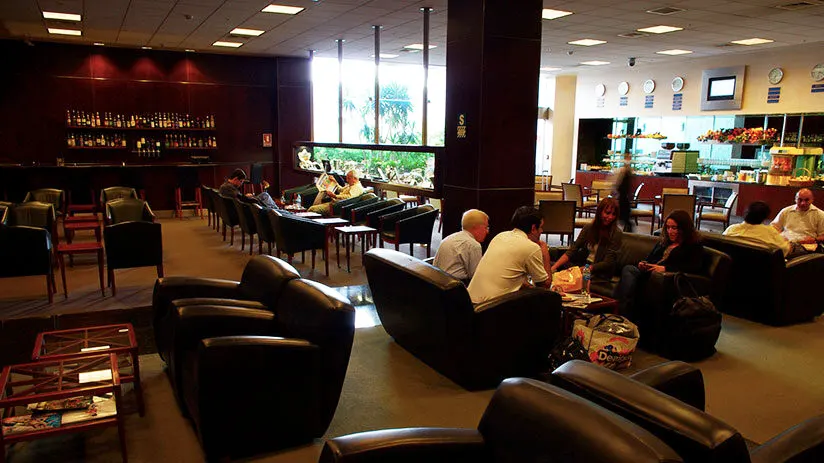
In the El Salon Vip Lounge, passengers can enjoy Wi-Fi, a buffet, non-alcoholic drinks, and coffee. Without mentioning a business center, amenities, a TV, a children’s area, restrooms, and even showers. They are open all days of the week. The lounge is on the second floor of the National Departure Lounge.
C. Luggage Zone
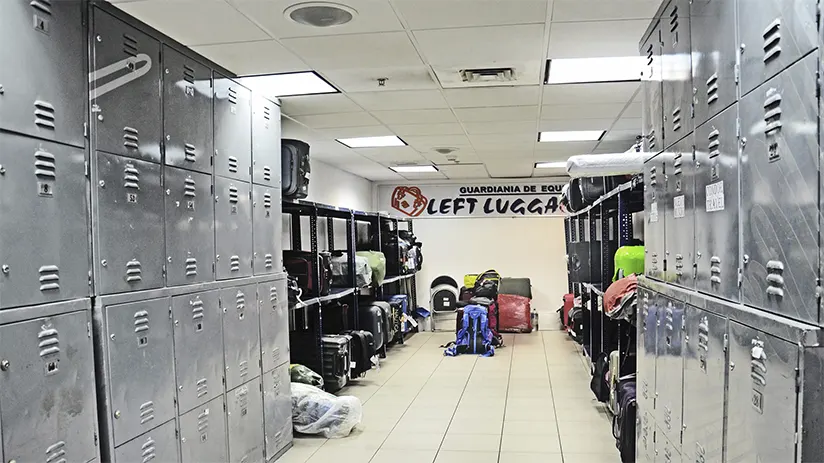
Private personnel guard your luggage in a large storage area. It is on the left, close to the rent-a-car counters, passing the baggage claim area. The cost is usually cheaper: $2 an hour and $13 a day.
D. ATM Machines
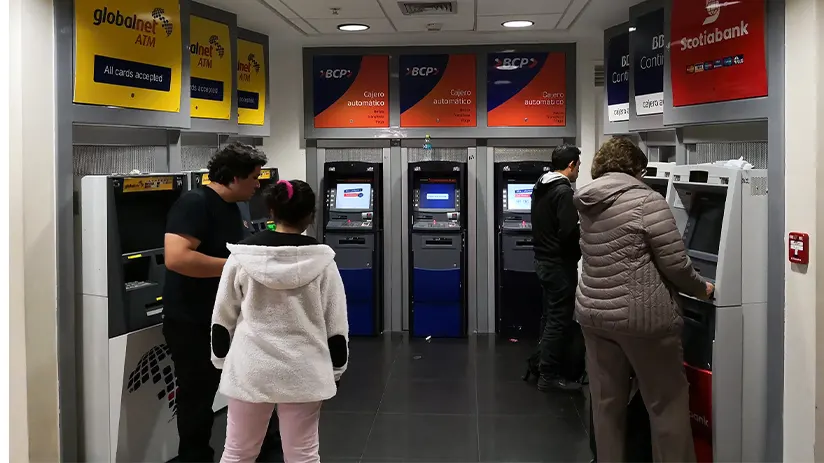
ATMs are throughout the airport. Getting cash from here is more expensive than from an ATM outside the airport terminal or in the city itself. So we suggest you do it only when necessary.
E. Money exchange counters
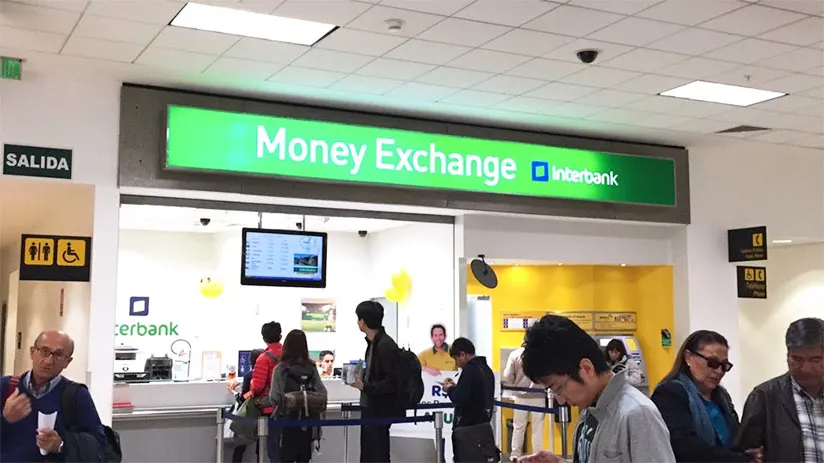
Fortunately, you can also exchange your dollars or currency of choice for the official currency of the country. Interbank or Word Xchange stores are available the vast majority of the day. However, the exchange rates can be somewhat high compared to other places in the city.
Getting IN and OUT
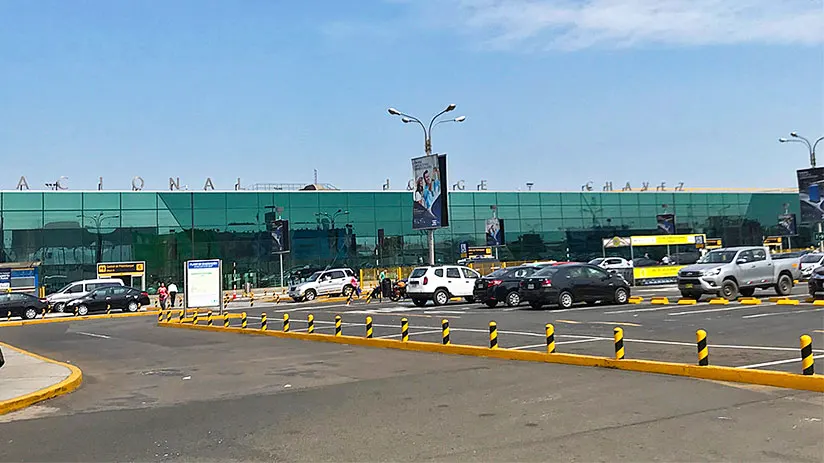
Any Lima Travel guide will tell you that Miraflores is the middle and upper-middle-class district that hosts most of the hotels in Lima. From it, you will have many options to move to the airport:
1. Airport Express Lima
It is the airport’s official bus company and offers more than 15 scheduled transfers per day. The buses go from the airport to specific 4 tourist points in Miraflores and vice versa.
The cost of the ticket is $8 for one way. Its terminal is in the same parking zone. The buses are modern, with large windows, comfortable seats, air conditioning, Wi-Fi, and unlimited luggage storage.
You can buy bus tickets directly online or on the same bus and check the schedules and bus stops at Airport Express Lima.
2. Taxi
There are many good cab apps, such as Uber, Cabify, InDrive, and DiDi. The benefit is that you will know the service price before getting a taxi. This lets you choose the best option for you. In addition, despite Peru is safe, contracting a taxi by apps will ensure you a secure service.
The price of a taxi from Miraflores or any middle and upper-middle-class district (Surco, San Isidro, or La Molina) to the airport is around 60 Soles ($16) one way. The price is the same from the airport to these districts.
Taxi Green is our unique recommendation in the airport. It provides the price before starting the service and the driver data and always delivers a bill of sale. The service usually begins at $20 or more. It is on the first floor, in the baggage claim area.
3. Rent a Car
Hertz, Budget Car Rent Peru, Avis, and the local ANC groups have counters in the airport. These are on the first floor (north side) of the airport terminal.
They are open 24 hours a day, and you can hire a car directly from there. Usually, the base rate starts at $400 per week for a little car.
You’ll have to increase the warranty cost above this amount for possible damages. The company will refund this amount according to the state of the returned car.
Flight arrivals
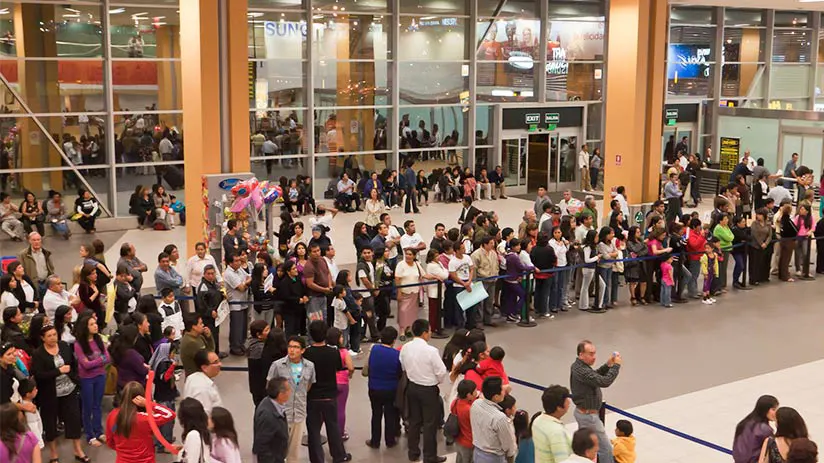
1. Aduana and electronic TAM
Before your flight lands in Lima, the flight attendants will bring you a customs declaration formulation. There, you will have to declare the articles and quantity of cash that you are carrying. The law forbids carrying certain medications, weapons, animals, and large amounts of cash, among others. Please be honest when declaring, as you may be subject to a bag check at the checkpoint.
2. Migration counter
There you will have to show your passport and flight ticket. Remember to have an updated passport and check if your country of precedent requires a visa to Peru. What is the reason for your visit to Peru?
For how many days will she stay in the country? When is your return date? What places will you visit? The immigration official can ask these questions.
3. Luggage pick-up
Passing migration control, there are luggage carrier sleeves. Please check the screens above the baggage claim area. Make sure to find your flight number and destination. Wait for your luggage once you have confirmed this information.
4. Customs control
Once you have your luggage and meters in front, Customs personnel will ask for your customs declaration formulation (previously filled). According to the customs personnel’s decision, you can pass for free. Or, indistinctly, they can open your luggage to contrast your declaration of the card with the truth.
Flight departures
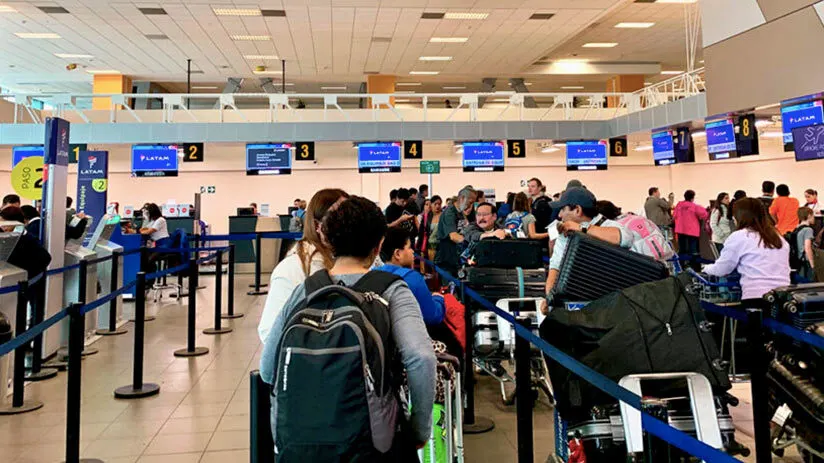
1. Luggage register counter
At the entrance to Jorge Chavez airport, is the first point to stay. You will have to register your luggage at the airline’s counter located on the first floor of the terminal. Each airline company has its own luggage and weight policies.
2. Security point control
After registering your luggage, you will have to go to the second floor. There, you’ll enter through the main departure flight gate to security control. Where you will have to take off your metal objects, jackets, belts, and keychains, among others, and go through the metal detector. After, you can go directly to the Customs control point.
3. Customs control
The passenger who has a domestic flight can go by the left directly to their departure lounges. Instead, the passengers who have international flights will have to go, by the right side, to Customs control.
They have to carry their passports updated and flight tickets at hand. The customs official will review the documents. In general, they will ask a simple question before stamping a seal of visit registration in your passport.
Finally, they will give them back the documents. If the tourist exceeds the allowed limit of permanence of 183 days, they will have to pay a penalty in cash. This is $1.30 per extra day in Peru.
4. Departure Lounge
The mini journey will be over. There you will find a Duty-Free market, some restaurants, and lounge VIP bars, inter alia.
International Connection
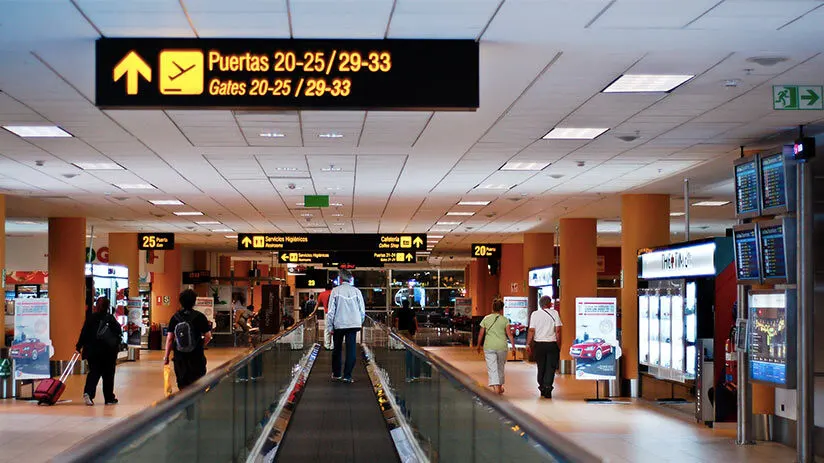
When you arrive at the airport, go directly to the next departure lounge without passing customs control. From this point, the procedure is similar to taking an international flight.
National Connection
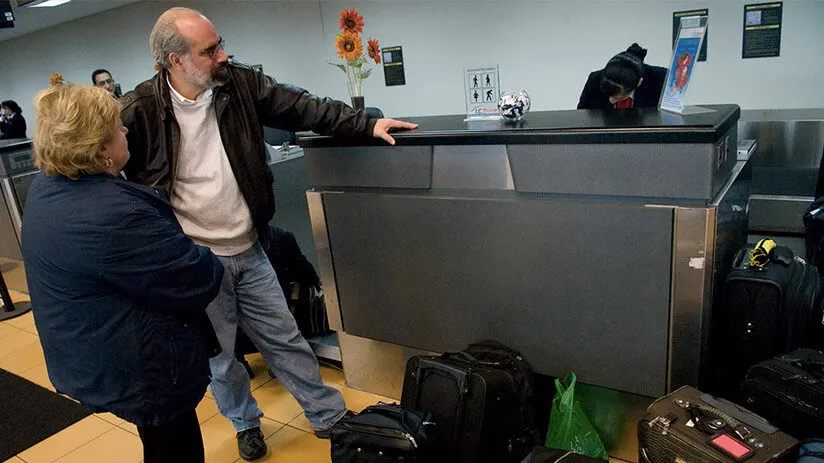
If you have a domestic connection, for example, from Lima to Machu Picchu (Cusco), be sure to pick up your luggage. After going to the airline counter, pick up your boarding pass and check your luggage back into your new flight. Don’t think that the airline is responsible for moving your bags from one flight to another.
“AIRPORTS WILL ALWAYS REMIND ME OF WHAT IT MEANS TO LOVE”
As you will see, knowing the Lima Airport is essential when organizing your trip. From making your check-outs to knowing the luggage storage. We hope, together with the Machu Travel Peru team, to have been helpful.
If you want to know more about everything the airport has to offer, you can consult with our advisors. They will be able to help you through this site. As well as how to help you book your tickets in advance.
Our team will be waiting for your soon visit to our magical country. What are you waiting for to organize your trip right now?